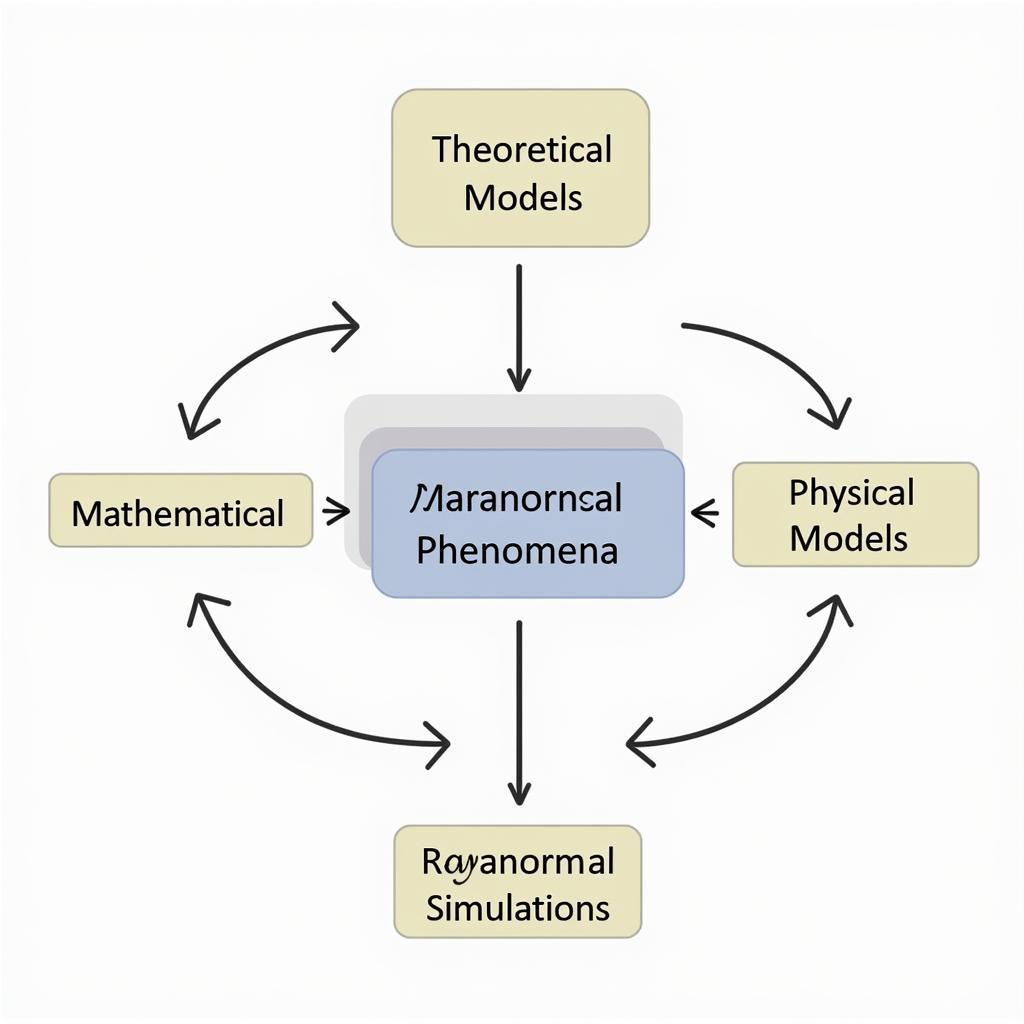Modelling Research is an essential tool in our quest to understand the unexplained. In the realm of paranormal investigation, where concrete evidence can be elusive, models provide a framework for analyzing phenomena, testing hypotheses, and potentially unlocking the mysteries that have captivated humanity for centuries.
What is Modelling Research in Paranormal Investigation?
Just like scientists use models to study complex systems in nature, paranormal researchers employ them to understand and explain anomalous events. These models can be theoretical constructs, mathematical formulas, or even physical simulations designed to represent and predict paranormal phenomena.
 Modelling Paranormal Phenomena
Modelling Paranormal Phenomena
Types of Modelling Research Used in Paranormal Investigation:
1. Statistical Modelling:
Statistical analysis plays a crucial role in paranormal research, particularly when dealing with large datasets or attempting to identify patterns in seemingly random occurrences. By applying statistical methods, researchers can determine the probability of an event being paranormal versus a chance occurrence. For example, in EVP (Electronic Voice Phenomena) analysis, statistical models can help filter out background noise and isolate potentially anomalous sounds.
2. Theoretical Framework Modelling:
Theoretical models provide a conceptual framework for understanding paranormal phenomena. These models often draw upon existing scientific theories, philosophical concepts, and historical accounts to propose explanations for unexplained events. For instance, some theoretical models attempt to explain precognitive dreams through quantum entanglement, suggesting a connection between consciousness and the fabric of reality.
 Quantum Entanglement and Precognitive Dreams
Quantum Entanglement and Precognitive Dreams
3. Simulation Modelling:
Simulation modelling involves creating controlled environments or scenarios to replicate and study paranormal phenomena. While challenging to implement, simulations offer the potential for controlled experimentation. For example, researchers might attempt to recreate the conditions of a haunted location in a laboratory setting to study electromagnetic fluctuations or other potentially relevant variables.
Benefits of Using Modelling Research in Paranormal Investigation:
- Provides a structured approach: Modelling offers a systematic framework for investigating paranormal phenomena, moving beyond subjective interpretations towards more objective analysis.
- Allows for hypothesis testing: Models provide a testable framework, enabling researchers to formulate hypotheses and evaluate them based on collected data.
- Facilitates communication: Models provide a common language for researchers from various disciplines to discuss and share their findings.
- Enhances credibility: Applying rigorous modelling techniques can lend credibility to paranormal research, potentially bridging the gap between scientific skepticism and genuine exploration.
Challenges and Limitations of Modelling Research:
- Complexity of the phenomena: Paranormal phenomena are often complex and multifaceted, making them challenging to accurately model.
- Lack of controlled environments: The unpredictable nature of paranormal activity makes it difficult to conduct controlled experiments.
- Subjectivity and interpretation: Despite efforts to maintain objectivity, subjective interpretations can influence model development and data analysis.
The Future of Modelling Research in Paranormal Investigation:
As technology advances and our understanding of consciousness expands, modelling research holds immense potential for unlocking the mysteries of the paranormal. By embracing innovative approaches and collaborating across disciplines, we can continue to push the boundaries of knowledge and explore the uncharted territories of human experience.
Conclusion:
Modelling research is an invaluable tool in the ongoing quest to understand paranormal phenomena. By applying scientific principles, rigorous methodologies, and creative problem-solving, we can shed light on the unexplained and potentially unlock the secrets of the universe.
Frequently Asked Questions About Modelling Research in Paranormal Investigation:
1. What are some examples of mathematical models used in paranormal research?
Mathematical models used in paranormal research can include statistical analysis for EVP analysis, probability calculations for precognitive experiences, and spatial analysis for mapping haunted locations.
2. How can I contribute to modelling research in paranormal investigation?
You can contribute by learning about research methodologies, developing your own models, collecting data, and sharing your findings with the paranormal community.
3. Are there any online resources for learning more about modelling research in paranormal investigation?
Yes, several online resources and forums dedicated to Paranormal Research discuss modelling techniques and their applications.
4. What are some ethical considerations when conducting modelling research in paranormal investigation?
Ethical considerations include respecting privacy, obtaining informed consent, and presenting findings responsibly without sensationalizing information.
5. Can modelling research definitively prove or disprove the existence of paranormal phenomena?
While modelling research can provide evidence and insights, definitively proving or disproving paranormal phenomena remains a complex challenge.
Contact us for further assistance:
Phone Number: 0904826292
Email: research@gmail.com
Address: No. 31, Alley 142/7, P. Phú Viên, Bồ Đề, Long Biên, Hà Nội, Việt Nam.
Our dedicated team is available 24/7 to answer your questions and provide support.